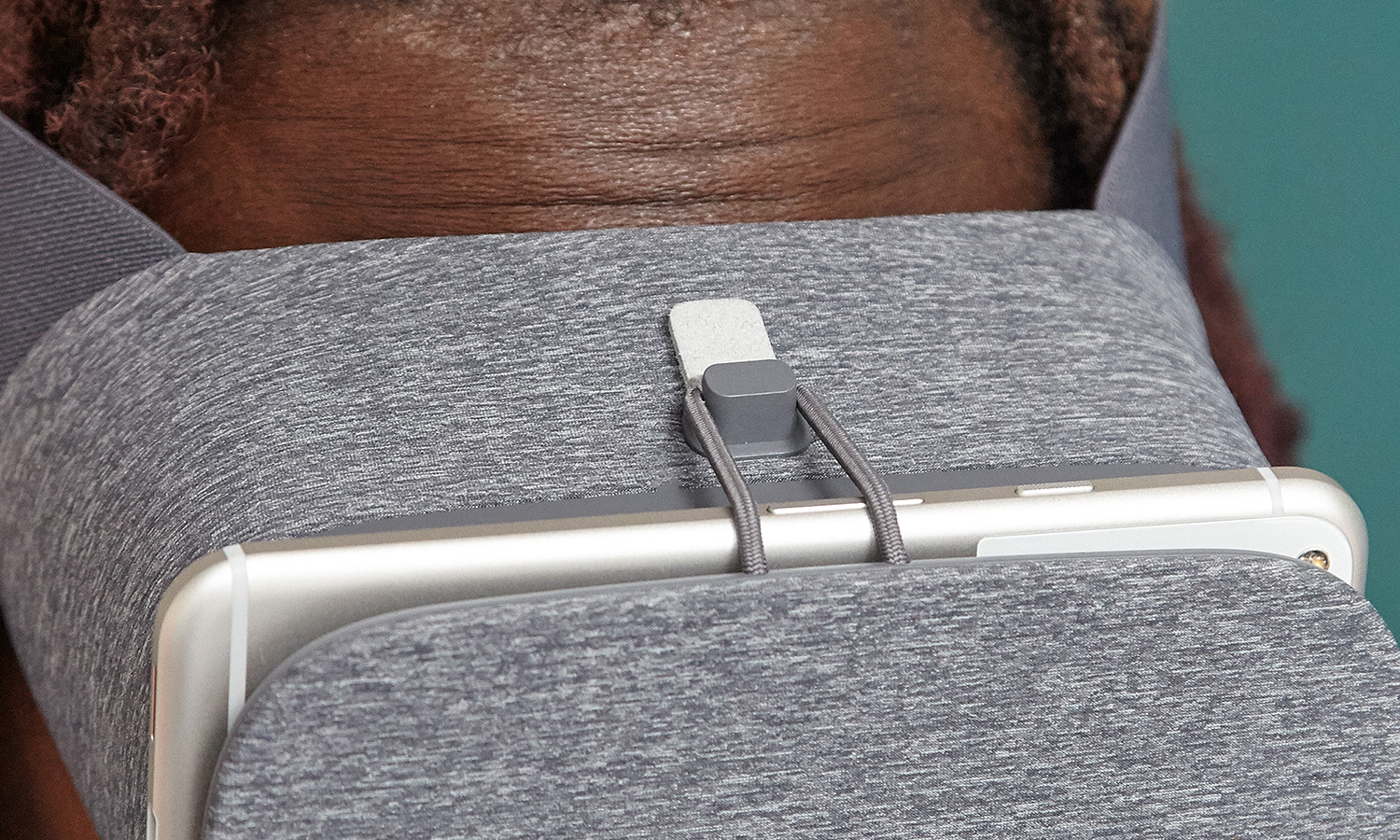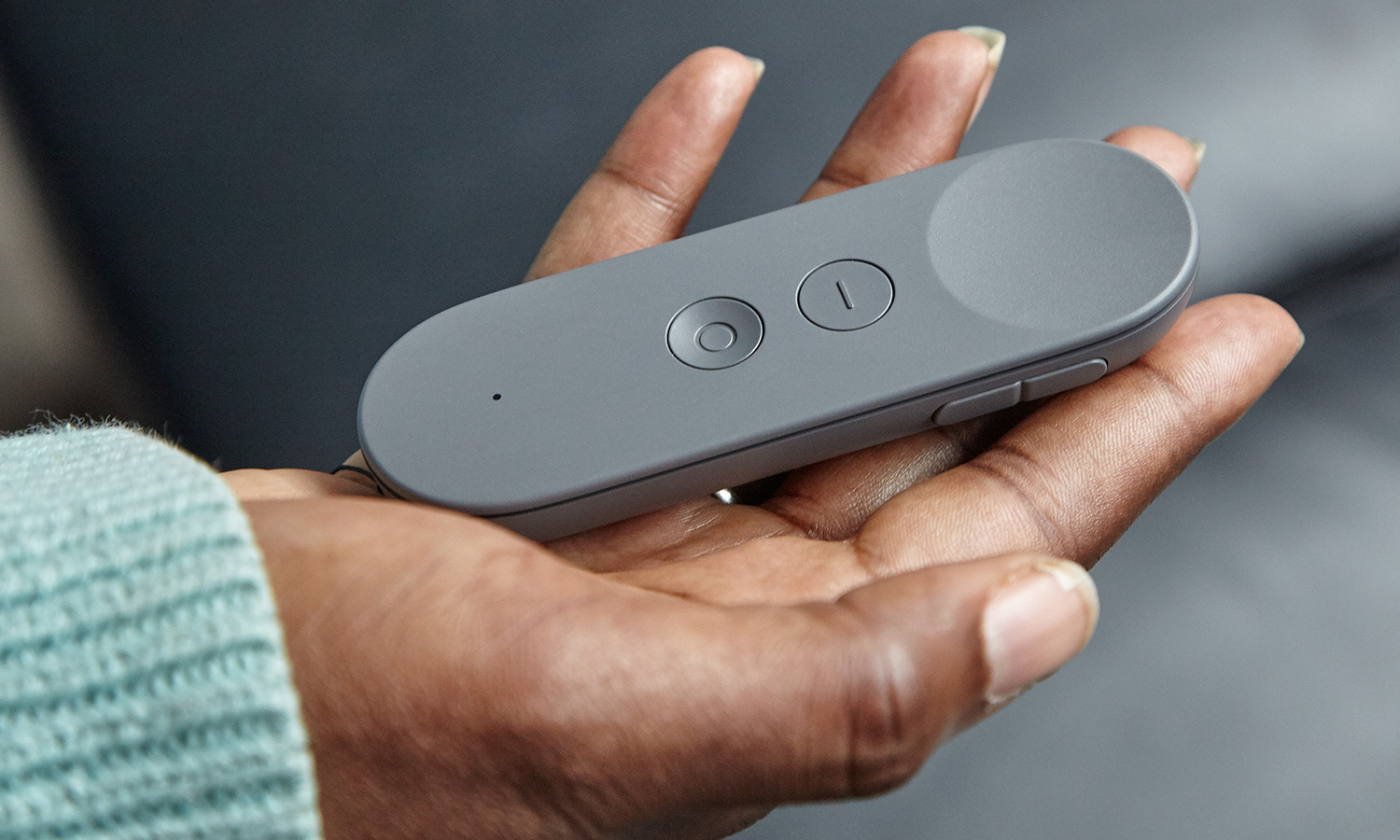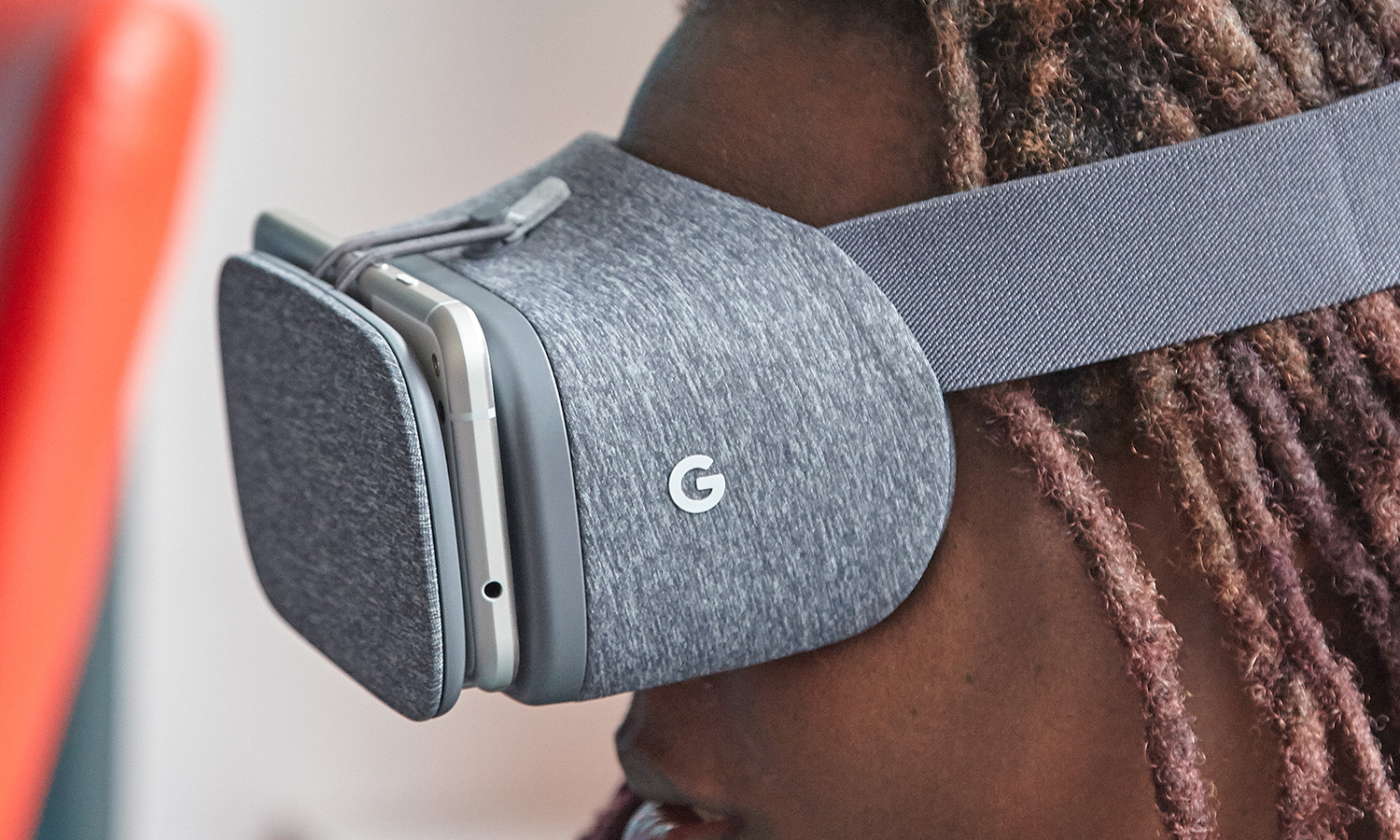Tom's Guide Verdict
The Google Daydream offers style, comfort and a promising catalog of VR content at an aggressive price.
Pros
- +
Comfortable, stylish design
- +
Extremely affordable
- +
Controller accurate and intuitive
Cons
- -
Not as visually sharp as competition
- -
Lacks integrated audio
Why you can trust Tom's Guide
Now this is more like it. After teasing us for the past few years with the namby-pamby Cardboard VR viewer, Google has created a virtual reality headset more suited to its reputation. The Daydream View has arrived with an aggressive $79 price tag, making it one of the more inexpensive ways to experience VR.
Powered by one of our favorite phones of the year, Daydream Viewis the stylish VR headset we didn't know could happen. Thanks to a promising catalog of content avaiable for Google’s new headset, you should definitely make this dream your reality.
Design
Daydream View is like no VR headset you've ever seen. The body of the headset is covered with the light, breathable material that you'd find in your yoga pants or workout shirt. It gives the View a more relatable, familiar feel than the plastic Samsung Gear VR. Even with a little rubber G adorning the left side of the View, the material is more than a cool fashion choice:The headband attached to the headset is made of thick gray, elastic fabric. The removable plush, mesh faceplate keeps the sweat down for those of us perspire heavily. It can also be washed if it gets grimy with continued use.

Similar to the Gear VR, your smartphone (in this case, a Google Pixel or Pixel XL, though ZTE’s Axon 7 also claims to be Daydream-ready) fits inside the front of the headset. However, instead of snapping your device into a pair of sturdy clasps as you would on the Gear VR, your phone is held in place by fastening a stretchy band over a small gray protrusion at the top of the View.
I'm not going to lie: I was a little worried about the $769 Pixel XL slipping out of the its seemingly flimsy harness. However, after whipping my head around wildly to avoid a wet willie from my coworker, the Pixel XL remained safe and secure, which built up my confidence in Daydream View’s overall setup. The View's inner flap has another elastic band in the center to secure the handheld controller when it’s not in use. It's a good thing too, since I lost that peripheral not 5 minutes after setting it down. I found it eventually, after tearing my living room apart.

Unlike the current Gear VR, which is only available in one color, the View can be purchased in Slate, Snow or Crimson (a.k.a. grey, white and red).
Comfort
Weighing 7.8 ounces, 6.6 x 4.2 x 3.7 inches is lighter and noticeably smaller than the Gear VR (12.2 ounces, 8.2 x 4.8 x 3.9 inches). Despite the smaller size, my spectacle-wearing colleagues reported that Google’s headset fit comfortably over their glasses. I comfortably wore the View for nearly 1.5 hours. The plush face mask rested gently against the top portion of my face with no pressure along the back of my head.
Get instant access to breaking news, the hottest reviews, great deals and helpful tips.
Audio
One day we'll get a mobile VR headset with an integrated sound system. But today is not that day. All the View's audio comes by way of the Pixel XL's bottom-mounted speakers or headphones plugged into the headphone jack or connected via Bluetooth.
Field of View
All Google will say about the Daydream View’s field of view is that it's more than 90 degrees, but did not disclose the refresh rate.
The biggest difference I noticed between the Daydream and the Gear VR is motion blur, a fuzzy effect that occurs when you turn to look somewhere else in a virtual world. I noticed a lot of it while wearing the Daydream.
The biggest difference I noticed between the Daydream and the Gear VR involved motion blur, which can occur when you turn to look somewhere else in a virtual world. The Gear VR had a negligible amount of blur when I turned my head, but I noticed a lot more wearing the Daydream.
The FOV is on a par with the most recent iteration of the Gear VR, which offers a wide 101 degrees a 90Hz refresh rate. Neither headset compares with the PC-powered Oculus Rift and HTC Vive, which both have 110-degree field of views and 90Hz refresh rates.
The biggest difference I noticed between the Daydream and the Gear VR involved motion blur, which can occur when you turn to look somewhere else in a virtual world. The Gear VR had a negligible amount of blur when I turned my head, but I noticed a lot more wearing the Daydream. The visual quality of Google's headset's is also slightly below the Gear VR, with more jagged graphics.

Still, I can't say that the Daydream doesn't provide an immersive experience. I felt like some kind of godly observer as I orbited around the earth in the Star Chart VR app. I had to fight the inclination to reach out and cup the planet in my hands. Zooming in for a closer look however, revealed some muddy graphics as the phone tried to render my desired view. Still, experiencing the same scene in the Gear VR offered an overall sharper vista and smoother rendering.
Setup
When I launched the Daydream app for the first time, I was treated to a 360-degree view of a lovely valley at the foot of a majestic waterfall. Before starting my magical journey through the VR wonderland, I had to calibrate the headset and controller.
The process takes about 4 to 5 minutes, and Google manages to work in a bit of fun. In one instance, I used the controller as a flashlight to spot cute woodland creatures as they make their way through a nighttime forest. In another, I pressed the top button on the controller to choose a specific rock or log. From there, I lifted my chosen object to reveal desert critters including a few mice and a bug or two.
Interface
Google has employed a floating tile interface similar to what you'd find on Gear VR or even the Oculus Rift and HTC Vive. However, where the Oculus-powered headsets have gone for a fancy house backdrop and the Vive with a space motif, Google opts for a colorful nature motif. The home screen is located in that picturesque valley from the tutorial and has two rows of tiles.

The larger top row is where Daydream's featured apps reside. Featured three at a time, a quick left swipe on the controller reveals the next two pages of software. The smaller row houses your recent apps.
Icons for Google Play, Library and Settings float just below the larger tiles. Selecting the Play icon took me to a brightly-colored cave with more floating tiles. A large central tile cycled between recent apps. If that wasn't enough incentive to click something, the same four apps ran vertically down the main tile's left side. A left swipe revealed nine additional apps squares including one labeled Apps You Should Try, which takes you to Daydream's library of available apps.
The Library menu displays all your purchased apps on a 5 x 3 grid. Selecting the Settings menu reveals a pair of clocks with the date along with Wi-Fi and battery indicators. Below that sit icons for to disable the Wi-Fi, recenter the headset and controller, mute audio and change the controller orientation from right to left. I noticed that if I left the Daydream idle for five minutes, I was forced to recenter.
Controller
Once you launch the Daydream on your phone, it connects to the View’s controller via Bluetooth. Weighing 1.6 ounces, the gray plastic controller is rounded on both ends and has a curved rear plate, perfect for cradling in an eager hand. According to Google, the peripheral should last up to 12 hours on a charge and takes about 2 hours to refill the battery.

The large, circular indentation at the top of the controller functions as a touchpad of sorts, letting you navigate with a series of swipes or a quick press. Directly below is the Apps button, marked with a raised minus sign. When you're perusing Daydream Home, it'll take you to the Apps page. However, developers can configure the button as they please within apps or games. Lastly, there's the Home button, which repositions the headset and controller orientation to the center when held for two seconds. You'll find volume buttons along the right side of the device and a USB Type-C port for charging at the bottom.
I'm curious how the controller would handle some of the more challenging fare on the Gear VR like Anshar Wars 2, Omega Agent and Smashing the Battle.
After about five minutes of button mashing and groping, I got the hang of the controller. From there, it was time to jump into some games and apps. I started with Wonderglade's assortment of amusement-park-style minigames to get a feel for navigating with the touchpad-like top portion of the controller. To move from one game to the next, I simply slid my thumb across the controller’s surface in my intended direction and clicked the touchpad when I wanted to enter a new game. The touchpad was just as responsive during the top-down shooter Hunter's Gate. When I cued up Star View VR, the Apps button summoned a small menu of modes that I could select by hovering over my choice with the touchpad and clicking.
Overall, I found the controller to be an efficient way to navigate through most of Daydream' available apps and games. However, I'm curious how the controller would handle some of the more challenging fare on the Gear VR like Anshar Wars 2, Omega Agent and Smashing the Battle, which rely on traditional Bluetooth game controllers. And it'd be nice if there was a way to use the Daydream View without the controller like the Gear VR.
Apps, Games and Experiences
My review unit of the Daydream View app catalog doesn't feature every app scheduled to launch with the headset. For example, the Fantastic Beasts and Where to Find them game that I tried at Google’s preview event for the Daydream View was nowhere to be found, much to my disappointment. Still the three games, three educational apps, trio of multimedia offerings and a news app awere enough to give a baseline of what to expect from Daydream's catalog.

In terms of games, you get the reasonably-paced, top-down shooter Hunter's Gate, the challenging puzzler Mekorama VR and the whimsical Wonderglade. The WSJ VR app transports you to a swanky apartment, complete with a fireplace so you can read the day's news and videos on a big screen or dive into the newspaper’s growing catalog of 360 video. The most compelling part of the app however, is the stock market tracker, which displays current stocks in a 3D polls of red and green.
Google-branded apps include Street View VR, which allows you to travel to breathtaking locales such as the Taj Mahal, Galapagos Islands, Petra, Iceland and Brazil to name a few. Arts & Culture VR allows you to experience famous works of art by Monet and Van Gogh, complete with audio tour from the comfort of your living couch. Lastly, there's YouTube VR, which is already populated with a host of compelling 360-degree content including Edge of Space 360, Kevin LaSean's "Topless" music video and the ATMOS: 360 Sci-Fi Short film to help flesh out your VR experience.
While fun and compelling in its own right, this early content still felt more like demos than full-fledged experiences. The YouTube VR app is currently the main attraction as it can deliver a variety of content into your VR cinema for free. But I'll have to see the promised Eve: GunJack 2, before I start heralding Google as the new king of mobile VR.
Performance and Heat
After about 15 minutes, the XL was noticeably warm, measuring about 110 on the device’s rear panel. It was so hot, I could feel the heat radiating slightly through that oh-so-breathable fabric. However, the phone felt much hotter when I touched its exposed sides due to the glass and metal chassis. Even after playing with the View for for 30 minutes straight, though, I didn't notice any lag from the XL's Qualcomm Snapdragon 821 processor.
Battery Life
When reviewed the Pixel XL, the smartphone lasted a whopping 10 hours and 34 minutes on our battery test. Google’s phone showed the same level of endurance when running virtual reality apps. After 2:15 of playing and watching VR content, the phone had 52 percent of battery life to spare despite its fiery exterior.
Bottom Line
Google is on the cusp of VR greatness with the Daydream View. Made from comfortable, breathable athleisure, the VR headset is more stylish than any head-mounted display has a right to be. The included controller is intuitive and offers agile, rather accurate motion. In terms of graphical fidelity, the Daydream VR almost rises to the level of the $99 Samsung Gear VR.
With more than year and a half lead, the Gear VR has a deeper catalog of apps, better visuals and can work with or without a controller. Still, the $79 Google Daydream View is an exciting choice for consumers looking for a high-end mobile VR experience that isn't powered by Samsung or Oculus.

Sherri L. Smith has been cranking out product reviews for Laptopmag.com since 2011. In that time, she's reviewed more than her share of laptops, tablets, smartphones and everything in between. The resident gamer and audio junkie, Sherri was previously a managing editor for Black Web 2.0 and contributed to BET.Com and Popgadget.
